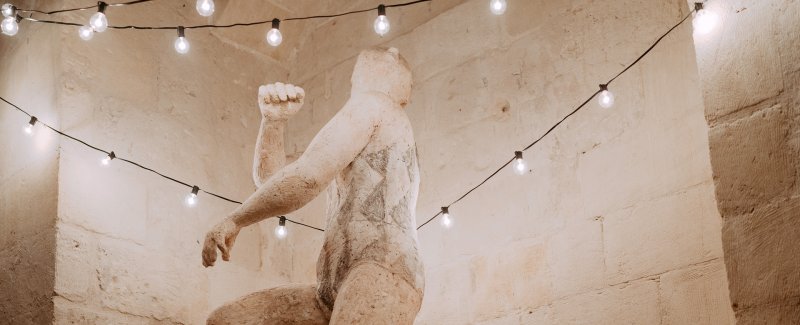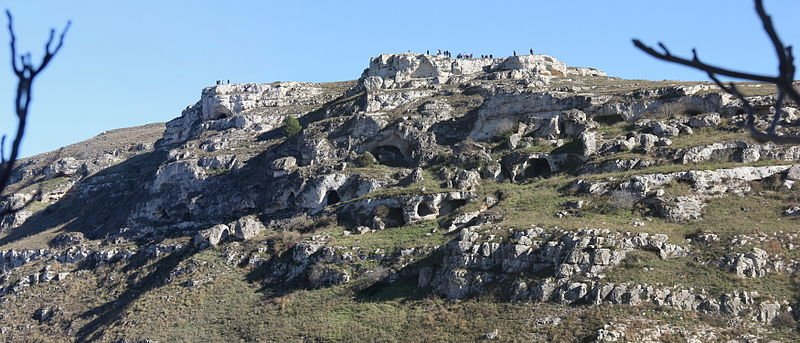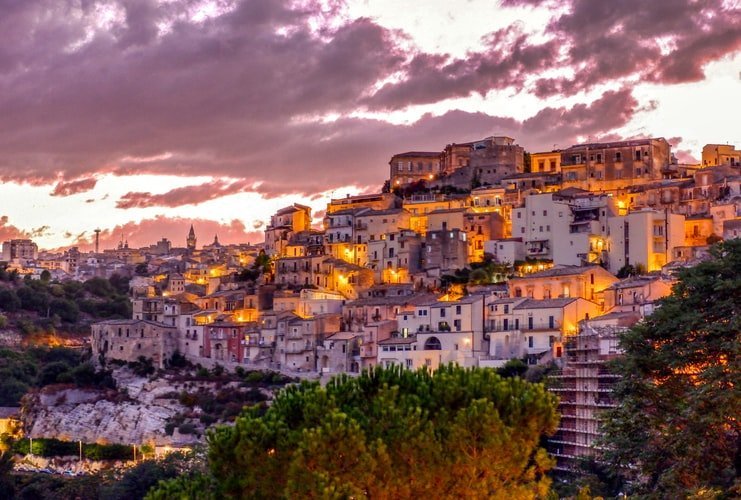Walk among 'Sassi di Matera', one of the oldest and most suggestive cities in the world which has been declared as the European Capital of Culture 2019, along with our suggestions on where to stay
The city is offering a program of European scope including the presentation of international artists. Matera 2019 stands as proudly as the past European Capitals of Culture and even sets itself as a model for the future. More than 400 citizens are involved in directly contributing to creating installations of light located at the focal points of the city. There are five themes that animate the program which runs up to 2020: Remote Future, Continuity and Ruptures, Reflections and Connections, Utopias and Dystopias, Roots and Paths. Our guide hasn't missed out anything from the calendar and make sure you don't miss our suggestions on where to stay in the picturesque scenery of the Sassi.
"... the first time I saw it, I lost my mind because it was just perfect." - Mel Gibson
The eyes of the world have finally settled on Matera. The city has prepared itself, patiently and without changing itself too much, to present itself on the world stage at the height of its splendor. So much so that today Matera is included in the Best in Travel by all the travel sites and magazines and has become a cultural protagonist on a European level.
MATERA, THE CAPITAL OF CULTURE

Credits: www.matera-basilicata2019.it
There are lots of special events organized by the assosiation Matera Capitale 2019. The rich and constantly expanding program is updated from day to day, so we advise you to read the schedule to avoid missing an event. Everything is organised around 5 main themes which are discussed on the official website of the event. We've summarised them below.
Remote Future - "The cultural projects contained in the "Future Remote" section allow a careful reflection of the relationship between humanity with space and stars over the millennia. A relationship that, when retracing the steps of one of the region's most illustrious residents, Pythagoras, explores the ancient universal beauty of mathematics".
Continuity and Ruptures - "As in many other European cities, Matera's relationship with modernity is conflictual: twenty-five years after Sassi's inscription - once a "national disgrace"- on the UNESCO World Heritage list, the city is still trying to come to terms with his physical identity".
Reflections and Connections - "The theme "Reflections and Connections" starts from the classic Latin motto, later adopted by Lorenzo de 'Medici, "Festina lente" (make haste slowly): we must rediscover the value of time and taking things slowly, distancing ourselves from the hegemony of the immediate present and take a step back from the accelerated pace that marks life in the 21st century."
Utopias and Dystopias - "Starting from the irrepressible utopian tension in the history of Matera, the theme "Utopias and Dystopias" intends to test new innovative schemes that represent a challenge to the preconception that tourism is the only way to achieve economic stability for the cities of South Italy...".
Roots and Routes - "The "Roots and Routes" section explores the extraordinary possibilities of the culture of mobility that unites all of Europe. The instinct to move has been rooted in the daily life of Matera since the tradition of "transhumance", which sees the herds of cattle cross the Murgia every year. "
Given the vast array of things to see and do, visitors have the opportunity to purchase the so-called "Matera Passport" for just € 19.00, a sort of cumulative ticket that can be used for 5 different activites. All these events are added to the urban-natural heritage of the Città dei Sassi (City of Stones).

Matera rises along a rift of the earth on one of the two sides of the Gravina river in the Luciania. The best words to describe the location of the city (synthetically but precisely), were used by the writer Carlo Levi: "...I came to a street, which on one side was lined with old houses, and on the other side skirted a precipice, in that precipice was Matera".

Matera is considered the second or third oldest city in the world. History places it so far back in time that nothing is certain, but it is estimated to be between 10,000 and 12,000 years old. It has been inhabited (without interruption) from the Paleolithic age up to the present day, and besides telling its own story it also tell us about the history of man. There is so much history in Matera that the concept fascinates and almost stuns any visitor. While other cities were being built, Matera already stood on the plateau, a sentinel of civilization, as hard as rock, tenacious and perched on the ravine. On the other side, the Murgia Materanache Park extends all the way to Puglia. The settlement, at least for the old city, is one of the most distinguished examples of bio-architecture, demonstrating the ability of man to shape material to his advantage and making it a place to live, without distorting the fragile natural dynamics of the material itself.

The city has so well preserved it seems to be frozen in time. If you consider its characteristics and morphology it can be compared to ancient Jerusalem, (a city that unfortunately has not been preserved quite as well). Great directors like Pier Paolo Pasolini and Mel Gibson have made it the perfect location for their films: The Gospel according to Matthew and The Passion of Christ.
"I SASSI" (THE STONES)

When going towards the city from the main road you can only see the 'new city' and the wonders of the "Sassi" areas remain hidden at first sight. Going down the streets you slowly enter into the old city and will be amazed by the wonder of the two neighborhoods built into the rock, the so-called "Sassi di Matera". There are actually two districts, Sasso Caveoso and Sasso Barisano, which were declared UNESCO World Heritage Sites in 1993. The two districts are characterized by a labyrinth of little streets that climb up and down the rocks, exploiting the natural slope of the rock face. The Sasso Barisano is oriented towards Bari (from which it takes its name) and has undergone the slowest change between the two districts, incorporating styles and buildings form different eras. There are medieval elements along with noble eighteenth-century palaces marked with portals, friezes and sculpted decorations. The Sasso Caveoso is located to the south and probably takes its name from its morphology, as it takes on a cavea form; its most evocative part is certainly the Church of Santa Maria de Idris, inside of which ares some splendidly preserved Byzantine frescoes. You can admire all the city and the surrounding area at 360 ° from the summit. The two districts are joined by La Civita, a rocky spur that is the fulcrum of the old city. All three work together to give life to an unparalleled urban settlement which hides a true underground life. Many of the houses have been renovated today, but to get an idea of how life would have been like it the past, you must is the visit to the Casa Grotta.

THE CIVITA - THE UNDERGROUND TANKS
La Civita is the natural link between the two 'Sassi' and is the heart of the city. At its centerstands the bell tower of the Cathedral, but the real jewel of Matera is not located in the open air but rather underground, just below Piazza Vittorio Veneto. Another of the epithets of Matera is the Underground City, as in addition to the cave-dwellings, a fundamental part of the city was rediscovered during renovation works in 1991: Il Palombaro Lungo. Together with the Chiesa Rupestre di Santo Spirito it is part of the Complesso degli Ipogei di Piazza Vittorio Veneto. Describing the long Palombaro is difficult in words, as you really need to visit it to understand its grandeur; it is a huge cistern for collecting water that can hold up to five million liters and extends all the way to the Palazzo dell'Annunziata. it is a true underground cathedral carved into the rock. The cistern has walls of tuff covered with an impermeable plaster and is part of a complex (together with smaller cisterns) for the collection of water, a system that branches under all the areas of the Sassi. You can walk from Piazza Vittorio Venetoto the Lapillo hill that overlooks the city by going towards the Tramontano Castle, built in the Aragonese style. Afterwards you can go down into the alleyways of the city center, full of restaurants and bars overlooking the Sassi and end the day by watching the sunset.
AT NIGHT

Credits Tango7174
Each photo you take when visiting the city will show different a different side of Matera, which changes at any time of day. Choosing different views along the precipice gives you many different views of the city and at night, with all its lights, the city looks like the sky mirrored in the ground, as if ti were some sort of a large monumental nativity scene.
PARK OF MURGIA MATERANA - THE RUPESTRI CHURCHES

In front of the "Sassi", separated by the deep gorge where the river Gravina flows, the Historical-Natural Archaeological Park of the Rupestrian Churches of the Matera begins. The Murgia natural park stretches between the Basilicata and Puglia and has remained almost untouched to this day. It is a breathtaking sight - a stern, harsh place, but where the green has found harmony with rock. And along this ridge you can find the oldest of human settlements. Archaeological finds show the presence of man since the Paleolithic period. Even here, as in the Sassi, some caves have been converted to Christian Rupestrian Churches ('Rocky Churches') over the course of time. A special mention, however, is due to the Cripta del Peccato Originale which is known as the "Sistine Chapel of the Rupestre" due to the value of its frescoes.

Credits www.isassidimatera.com
What really stands out about the Matera area is its strong identity of the city and its continuity over time. Even though institutions have abandoned it in the past, people have never left. They are too fond of those stones, the authentic and ancestral building material. Citizens do not see the nomination of European Capital of Culture 2019 as the end of the road, but rather as a new beginning towards a future full of promises and possibilities. The City of the Stones deserves to be visited, so start making plans! Nothing in the world is more beautiful.
WHERE TO STAY - Our suggestion to stay is Ostello dei Sasi

If you want to experience the atmosphere of Matera, we suggest you stay in the suggestive Ostello dei Sassi, a new property that has combined the best of modern and ancient together. Located in the heart of the city, it offers high quality services and different room types. It is an ideal starting point to visit this magical Italian city.
HOSTELS AROUND THE WORLD: MATERA
If you want to experience other suggestions about this wonderful city, look at the video we made for the "Hostels Around the World" column, a fun overview with breathtaking shots of the old town and the Sassi.





